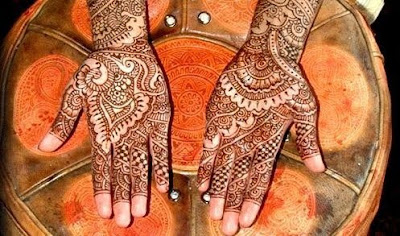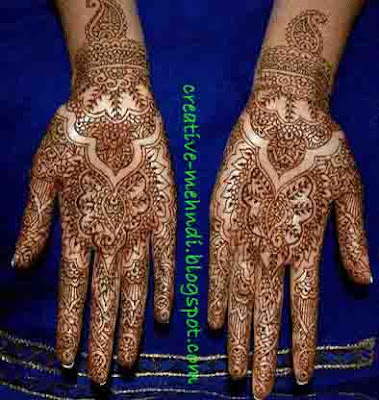
Mehndi ceremony will be the first of all the customs i.e., one or two days before wedding. Women, girls and children sing song while doing the custom. The art of applying henna on the hands and feet is known as Mehndi and it is a very old custom and art form of India. Indian weddings are incomplete without the bridal Mehndi ceremony .The ritual of Mehndi ceremony is followed in every part of the country where the hands of the bride are adorned with the lovely red color of the bridal mehendi. On these festive or weMehndi or Henna, applied on the hands or feet of females, is quite popular in India. Out of the various types of mehndi available in India, the mehndi of Rajasthan is one of the most popular. Mehndi is prepared by grinding the dry henna leaves into a very fine powder and then making a paste with water. This paste is then applied on the hands and feet of females in the form of beautiful designs, with the help of matchsticks or cones. After the mehndi gets dry, it is removed revealing the beautiful designs on the skin in red color. The Rajasthani Mehendi is considered to be one of the best because it leaves the darkest color of red on hands and feet.
For this reason only, the henna of Rajasthan, India is very much in demand for the bridal mehndi also. In Rajasthan, Mehendi is put up on almost each and every occasion, in a different design, as it is considered very auspicious. One of the most popular designs in Rajasthan is the one called chowk. Literally meaning a courtyard, it is put up in various forms, each form being suitable for a different occasion. One design is applied at the time of the Gangaur fair, another at the time of Teej, yet another for Holi and so on. Other popular designs are chopper (game of ddding occasions mostly traditionala


















































